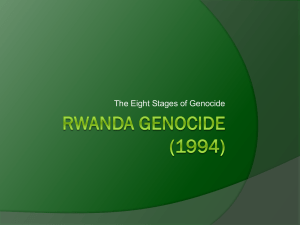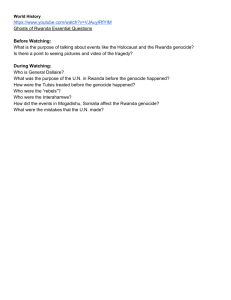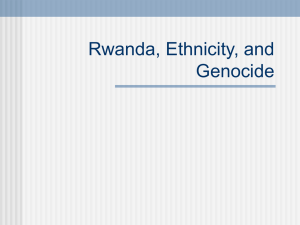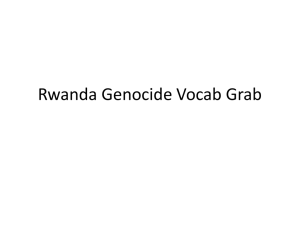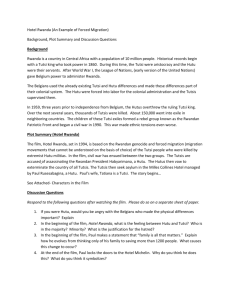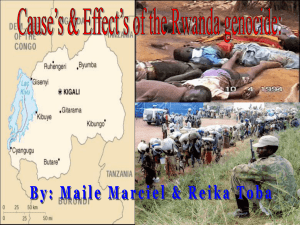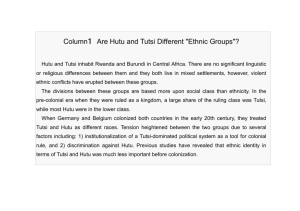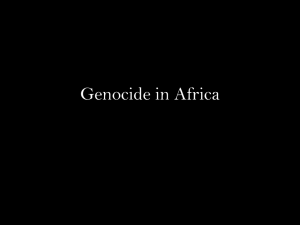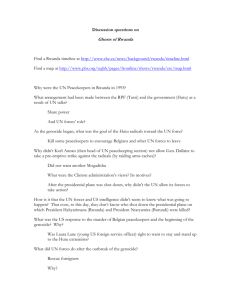Rwanda 1994 Genocide
advertisement
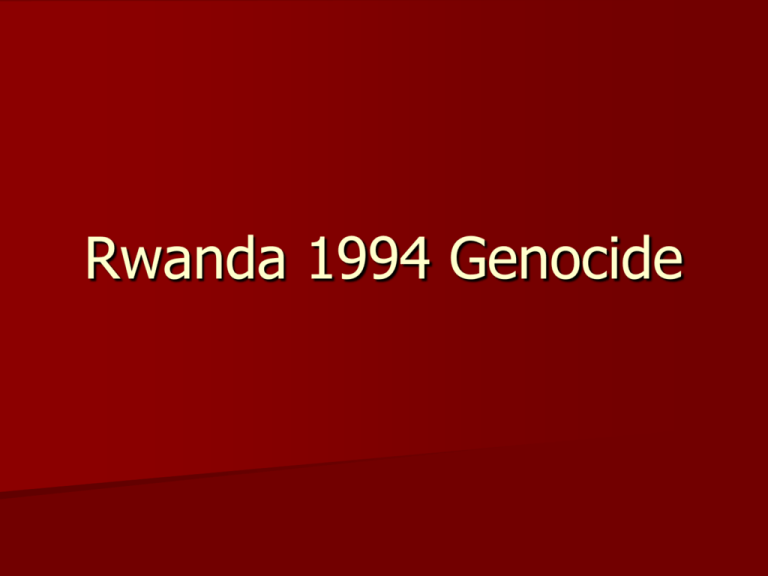
Rwanda 1994 Genocide Background Information Tutsi-Hutu divide is by class and occupation. The Tutsi are the upper class and are mostly herdsmen. The Hutu are the lower class and for the most part live by farming The first European Power to enter Rwanda is Germany Rwanda “given” to Belgium after WWI to look over as a mandate The Hutu are subject to the forced labor The Tutsi supervise them at their tasks. From 1933 everyone in Ruanda-Urundi is issued with a racial identity card The conflict grows 1962 The first presidential election in Rwanda is won by Grégoire Kayibanda (a Hutu) In the spirit of Kayibanda's movement, 'cockroaches' becomes the favorite slang name for Tutsis some 14,000 Tutsis are massacred in 1963 Growing hatred The country's most fervently racist newspaper publishes in December the Hutu Ten Commandments To ensure the effectiveness of Hutu Power, Habiyarimina's government begins to recruit Hutu youth militias in March 1992, Radio Rwanda spreads a deliberately false rumor that a Tutsi plot to massacre Hutus has been discovered. The spark By 1992 President Habyarimana is beginning to disappoint his extremist supporters. In August 1993, Habyarimana signs a peace treaty with the RPF, officially bringing the war to an end. On 6 April 1994 a rocket, brings down a plane. In it are two presidents - Habyarimana, and the head of state of neighboring Burundi. The assassination is blamed on the Tustis Radio broadcasts urge people to do their duty and seek out the Tutsis and Tutsi-sympathizers living among them in their streets or villages. Eliminate the cockroaches is the message. Genocide On April 29 the state radio announces that May 5 is to be the 'cleanup' day by which the capital, Kigali, must be cleansed of Tutsis. Between April and July some 800,000 Rwandans are slaughtered. The tool in Rwanda's genocide is the everyday machete http://news.bbc.co.uk/1/hi/world/africa/3594187.stm http://www.pbs.org/wgbh/pages/frontline/shows/ghosts /video/ The Connection.org : The Women of Rwanda

